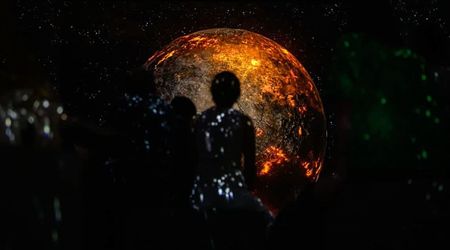ESA's Biomass satellite launched aboard Vega C to track carbon and fight climate change

The European Space Agency's (ESA) Biomass satellite was launched aboard a Vega-C rocket from Europe's Spaceport in Kourou, French Guiana, on April 29, 2025, at 11:15 CEST. In less than an hour from launch, Biomass separated from the rocket’s upper stage, according to the European Space Agency. The Biomass satellite, weighing approximately 2,493 pounds, was deployed into the Sun-synchronous orbit at an altitude of about 413.82 miles. The Vega C Flight mission was called VV26, and the launch was livestreamed, as initiated by the launch service provider Arianespace.

The satellite controllers at ESA’s European Space Operations Centre in Germany received the first significant signals from Biomass. It was relayed through the Troll ground station in Antarctica, as confirmed by ESA. In orbit, the controllers will carry out the ‘launch and early orbit’ phase, where they verify that all systems are functional. Once communications are established, the critical phase of the satellite begins. This involves a series of manoeuvres that will deploy the satellite’s 12-metre-wide mesh reflector with a 7.5-metre-long boom support.
This process is done in various stages, with the boom deployment done across three stages of seven minutes each. This will be followed by the wire mesh antenna, which will take around 20 minutes to extend and unfold. To ensure proper completion and verification by the control team, only one stage will be finished a day, according to European Spaceflight. Once fully functional, Biomass will add to the list of pioneering missions operated from ESA's mission control centre. The Biomass mission will deliver information about our forests and how they are changing.

The Biomass satellite contains the first P-band synthetic aperture radar in space that will observe Earth, as per an Arianespace statement. The radar has a long wavelength that can penetrate through forest canopies and gather data on their height and structure. This makes it easier to measure the carbon stored in the world’s forests and the shifts it undergoes. The mission will also map deserts for subsurface geology, ice sheet structures, and forest floor topography. Biomass will spend at least five years observing at least eight growth cycles of forests.

These ‘Earth’s green lungs’ absorb about 8 billion tonnes of carbon dioxide every year, and human activities release further carbon. Experts lack accurate data on the carbon stored in forests and how it changes from environmental impacts. The data from Biomass, developed by over 50 companies led by Airbus UK, will resolve these uncertain questions and help better modulate global climate control. Biomass is ESA’s seventh Earth Explorer Mission that will use satellite technology to address scientific questions and is commissioned under a €229 million contract.

This is the fourth Vega-C rocket launch overall and the second successful launch since a failure caused by the material of a nozzle, as per Arianespace's YouTube video. A ground test with a new material also failed right after and prompted the redesign of the entire motor. Two successful ground tests later, Vega C returned to flight in December 2024. The rocket, which has increased performance and better payload, can launch up to 7,275 pounds into space, including small scientific and Earth observation satellites. Since its comeback, Vega C has maintained a 100% success rate, and this includes the launch of Biomass.









